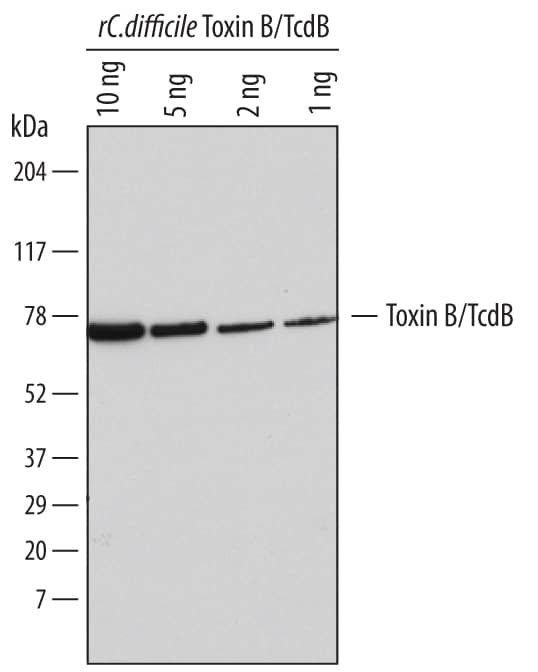Toxin B/TcdB Products
Clostridium difficile is the leading cause of hospital-acquired diarrhea, known as C. difficile-associated disease. The estimated number of cases of C. difficile-associated disease exceeds 250,000 per year, with health care costs approaching US $1 billion annually. The major virulence factors produced by C. difficile are two toxins, TcdA and TcdB. Both toxins can monoglucosylate and inactivate Rho family small GTPases within target cells, leading to disruption of vital signaling pathways in the cell, subsequently causing diarrhea, inflammation, and damage of colonic mucosa. Both toxins have a similar tripartite structure comprised of an N-terminal glucosyltransferase domain, a C-terminal receptor binding domain, and a small hydrophobic span possibly involved in toxin translocation. Our recombinant TcdB consists of the enzymatic domain. Both TcdA and TcdB also have potassium-dependent UDP-Glc hydrolase activity, which is essentially glucosyltransferase activity with water as the acceptor molecule. Under same conditions, UDP-glucose hydrolysis by TcdB occurs at a rate about 5-fold greater than that of TcdA.
2 results for "Toxin B/TcdB" in Products
2 results for "Toxin B/TcdB" in Products
Toxin B/TcdB Products
Clostridium difficile is the leading cause of hospital-acquired diarrhea, known as C. difficile-associated disease. The estimated number of cases of C. difficile-associated disease exceeds 250,000 per year, with health care costs approaching US $1 billion annually. The major virulence factors produced by C. difficile are two toxins, TcdA and TcdB. Both toxins can monoglucosylate and inactivate Rho family small GTPases within target cells, leading to disruption of vital signaling pathways in the cell, subsequently causing diarrhea, inflammation, and damage of colonic mucosa. Both toxins have a similar tripartite structure comprised of an N-terminal glucosyltransferase domain, a C-terminal receptor binding domain, and a small hydrophobic span possibly involved in toxin translocation. Our recombinant TcdB consists of the enzymatic domain. Both TcdA and TcdB also have potassium-dependent UDP-Glc hydrolase activity, which is essentially glucosyltransferase activity with water as the acceptor molecule. Under same conditions, UDP-glucose hydrolysis by TcdB occurs at a rate about 5-fold greater than that of TcdA.
| Source: | E. coli |
| Accession #: | P18177 |
| Applications: | EnzAct |
| Reactivity: | C. difficile |
| Details: | Sheep IgG Polyclonal |
| Applications: | WB |


